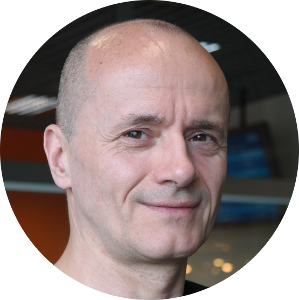
Cardboard Design: Physical Visualizations Of Real-time Data With Arduino
The goal of the workshop is to design and build an installation which will physically visualize a stream of real-time data, e.g. number of attendees. The goal of the design part of this workshop is to support participants in expressing their ideas for future projects. We will use cardboard objects as thinking tools throughout the whole design and implementation process. We will provide you with tools for generating ideas. You will also experience designing prototypes on different levels of fidelity. We will invite you to work with upscale models and apply methods for presenting and exploring visualization. As the final prototype is expected to be small (desktop size), you will downscale your model before adding actuators and electronics. Then, you will connect your prototype to the stream of real-time data. Finally, you will see your prototype alive! The best prototypes will be presented during the main part of the conference. This workshop will be practical.
BRAINS ON
HANDS ON
Wiesław Bartkowski
workshop leader
Interaction designer and complex systems researcher, works in between IT, social science and design. Wiesław is faculty at SWPS and School of Form and is a guest lecturer at Warsaw University and at the Polish-Japanese Academy of Information Technology. He is passionate about sharing programming knowledge. He is into complex systems science, where he simulates and analyses techno-social systems. He did research in the “Future and emerging technologies” programme and created tools that are used at West Point and the UN. His science visualisations and interactive installations have been presented at the Museum of Modern Art in Warsaw, Ujazdowski Castle, BOZAR, Zachęta and Nowy Teatr. Founder of the Garden of Interactions – a place that connects social sciences to art and technology. Director of the Human-Technology Interaction pathway at SWPS.
Joanna Kwiatkowska
workshop leader
Joanna is a design researcher. She is a PhD student at Tallinn University in Estonia and a visiting researcher at the Faculty of Industrial Design Engineering at TU Delft in the Netherlands. She is interested in generative tools to support non-designers in generating ideas for future products or services. She has presented her work at international conferences, e.g., CHI2013 in Paris or NordiCHI’14 in Helsinki and participated in international workshops, e.g. DIS2014 in Vancouver or CHI2014 in Toronto. Apart from her scientific work, Joanna has realized many design research projects for various organizations, e.g., Play, Netia and Tatra National Park in Poland. She also gives lectures on design research and conducts trainings on design methods, e.g. cooperation with PTBRIO and Design Silesia, guest lectures at TU Delft, School of Form or SWPS in Poznan.
Olga Górnicka
workshop supporter
Olga is a researcher and interaction designer. SHe is graduated at SWPS. Involved in CHI Polska organization. she is co-organizing WUD na Pradze conference and Ogrody Interakcji project. She feels perfectly while designing for real life. She is currently working on PZU projects.
Szymon Pepliński
workshop supporter
Szymon is a Creative Technologist and Educator with a strong artistic background. He is a polymath, so his expertise spans a significant number of different subject areas. He’s working at the intersection of science, engineering, art, and design. He doesn’t just think outside the box. He is a maker, he make things. To become a better innovator, it’s all about experiencing as many cycles of doing as you can.
Magda Rydiger
workshop supporter
Trained as a product designer. She hones her skills at the Academy of Fine Arts in Krakow and in Warsaw at M.A programme. She spent a year in France, where she defended her bachelor diploma (Diplôme National d’ Art plastique ) at the L’École Supérieure d’Art et Design in Saint-Étienne. In her professional life she is still looking for new challenges. Nowadays she is interested in design service and designing with user-centered approach. She is currently working as a user interface designer at Senfino, the softwarehouse focused on providing mobile products. In her spare time, she is a co-creator of the design trio Cztery Szczotki, in which - in cooperation with the Polish craftsmen - she designs and creates uniques and elegants brushes sets for hair and body.
Martyna Ochojska
workshop supporter
Graphic and Product Designer. She earned her experience at the Polish Universitys of Fine Art in Katowice and Warsaw. Also studing product design in Sheffield Hallam University in England. Eager to cooperates with students and companies from other countrys. Perfectionist and minimalist in every way. She won competinion “Hate speech” in 2014, making social advertising campaign to show the diversity of religion in Poland. Cofounder of design trio ZestawZESTAW implementing and promoting the ecoproject of eatable dishes.

Exploring new ways to control the Internet of Things with Emberlight
In this workshop, we'll explore new ways to control IoT devices. We'll provide you with an example that uses capacitive touch to control lights via the emberlight smartsocket. You'll have access to emberlight smartsockets, the emberlight api and other necessary items to explore creative new ways to interact with light via emberlight. This workshop will be practical.
HANDS ON
Kevin Rohling
workshop leader
Kevin has a unique background in the mobile space, having been involved with a number of early stage startups, including his role as an early engineer at Card.io, CTO at Breezy, and the Founder/CEO of CISimple (recently acquired, now ship.io). He is a software developer and entrepreneur with experience shipping apps on iOS, Android and Windows Phone, and also enjoys hacking on various hardware devices. He is currently an advisor for ElectricCloud and Co-Founder/VP of Product at Emberlight.
Steve Arnold
workshop leader
Steve Arnold is Co-Founder and Chief Design Officer at emberlight, makers of a plug and play adapter that turns any light into a smart light. He is a passionate problem solver who has spent the past two decades designing brand-defining product experiences. Steve was the designer behind the recent launch of Twitter Fabric. Prior to Twitter, Steve built product at Google where he focused on simplifying complex consumer and business products. Steve also spent a number of years at Autodesk where he was the design lead for multiple key initiatives including AutoCAD Mac and the product which became Autodesk Homestyler.

Prototyping Fun With Texas Instrument's Sensor Tag
Be a part of MCE's fun providers team! Through our playground with TI SensorTag take a chance to create exciting projects supported by a dedicated mobile app, no matter if you are designer or developer. TI SensorTag is a great Bluetooth Low Energy device full of sensors (accelerometer, gyroscope, compass, thermometers, barometer and much more). You can use it either to have some fun testing and playing with each of sensors or even preparing a prototype for your next startup! You will learn how to develop an idea into a working prototype, basics of design process and integration of SensorTag with mobile devices (Android and iOS). Moreover if you are the one, who is really into hardware you will have an opportunity to modify SensorTag firmware from changing source code up to deploying it to a real device. This workshop will be practical.
HANDS ON
Krzysiek Wróbel
workshop leader
Android Developer, currently working for Polidea, passionate about mobile technologies, wearables and Augmented Reality. Lately also working on his fitness wearable startup (). Stays in shape thanks to climbing.
Tomasz Grynfelder
workshop leader
Senior Software Engineer at Polidea, mobile technologies freak highly focused on iOS development, having an affair with hardware prototyping. Member of Jitter Hackathon team on Mobile Central Europe 2014. Great fan of cycling and sailing.
Przemek Pomaski
workshop leader
Product and UX Designer with user-centred attitude. Often working on projects addressed to children. Enthusiast of creating user experiences extending beyond digital world. Creating ceramics and taking photos in the meantime.
Aleksander Piotrowski
workshop supporter
became a mobile developer after long run as a backend developer. Because of age holding senior positions from the day one as android programer. Serial hackathon winner, or at least contender ;-)
Błażej Marcinkiewicz
workshop supporter
iOS developer for over 3 years, previously embedded platform programmer. Recently I’ve been working on a supplementary app for an activity tracker communicating over BLE. Apart from that I’m a great fan of Norsk culture and traditional Finnish humppa ;]

Developing apps for the Physical world with the Wunderbar and another devices
Learn how to create mobile or desktop applications leveraging the data provided by the “Internet of Things”. The workshop will teach you how to connect sensors (BLE, MQTT) and the challenges it can bring, how to retrieve data from sensors, and how to change their configuration. We will use the WunderBar as our IoT array of sensors like humidity, proximity, noise, gyroscope, accelerometer, infrared, etc. and the open source iOS/OSX relayr framework. Although the workshop will focus on programming for Apple devices (iPhones, iPads, Macs), it is worth noting that relayr offers open source frameworks for Android, Python and NodeJS. For example, you can create a 3D environment in Blender and see it change as you interact with the sensors! This workshop will be practical.
HANDS ON
Marcos Sánchez-Dehesa
workshop leader
is a Senior Software Developer at relayr where he is responsible for the Apple relayr SDK. He is a telecommunication engineer specialist in mobile development, OpenGL and GPGPU computation. wunderbar link
Marcos has a passion for 3D rendering and making 3D mobile content applications accessible. He loves Blender and enjoy the confluence of good ideas and open source contributions.
Peter Dwersteg
workshop leader
Peter is an all-around developer who loves everything from Hardware through Applications. He just moved to Berlin from Seattle, and is currently travelling everywhere in the world for relayr.
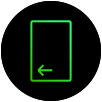
Crazy robotic applications reusing your mobile devices
During the workshop the participants will be creating and programming a physical robotic application. They will be reusing their Android device as brain, a Bluetooth enabled microcontroller and some random sensors and actuators. The workshop will be focused on creativity and no previous robot programming expertise will be required. This workshop will be practical.
HANDS ON
Victor Diaz
workshop leader
Victor Diaz is a researcher, artist and educator whose focus is on creating new ways of interactions between computers and people. He is interested in developing novel ways of collaborative interactions in public spaces considering the cultural context. He also creates tools that help to increase the usability of creative technologies.
He is the creator of Protocoder, a prototype and experimentation platform for Android devices. http://www.protocoder.org

Beacathon - Beacon Hackathon
Join us to brainstorm on some great ideas related to beacons. Be inspired and make your first iOS beacon app. Kontakt.io team will also be here with us to show us their beacons and assist us. Come, build, win!”
HANDS ON
Ania Lipińska
workshop leader
A mobile UX designer at Allegro specializing in iOS.
Łukasz Stocki
workshop leader
Young, bright but not too serious though ;) Always looking for a way to be on the edge of innovation.
Paweł Łopusiński
workshop leader
Ambitious and full of crazy ideas but a little lazy. Always looking for ways to do things easier and faster.
Łukasz Kuczborski
workshop leader
Founder and co-organizer of @SwiftWarsaw, iOS Developer @Allegro_Group, Swifter and Photographer. When I am not coding, I am probably photographing people.
Łukasz Hlebowicz
workshop leader
Lukasz is an experienced software developer who has been managing various projects for companies from Fortune 500 as well as startups. He is an iOS enthusiast since 2010. Fascinated with iBeacons technology joined kontakt.io and is responsible for iOS SDK and apps. Before dedicating himself to mobile development, he spent 8 years developing backend and desktop apps in C++. Thanks to that he knows how crucial is to see the difference between development environments and dedicated platforms.
Marcin Kasz
workshop leader
Marcin Kasz works as a Beacon Ambassador at Kontakt.io one of the worlds leading beacon manufacturing companies based in Krakow, Poland. He has previously worked in many multinational companies like Cisco Systems and in various industries including Finance and Game Development. In his spare time Marcin enjoys playing music and brewing himself a nice cup of coffee.
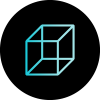
3D prototyping with MonkeyFab
The popularity of 3D printing is rapidly expanding. Now, the barriers between design and fabrication have been even further broken down. With just a basic understanding of the technology, we are able to test the dimensions, ergonomics, or texture of our concepts. This year MonkeyFab will support our workshops with their 3D printers and mentors willing to share their experience and knowledge. Learn how to turn an idea into a physical object.
HANDS ON
Paweł Twardo
Karol Kowalik
Stanisław Sypiański
Jakub Burtea

Mapping Your Minimum Viable Experience
It is now the norm that products, and the services they provide, will be expected to be available everywhere. Your customer’s experience with your product will occur in many contexts on a wide array of devices. Understanding these touch points, and the particular devices involved, will help your team outline their strategy for feature delivery and find innovative ways to deliver a more holistic user experience. Using a blend of Lean UX practices and Agile iteration planning we will take a product through the user journey, identify key touch points and their contexts, and gain insights into the integration points for each device. Attendees will learn a framework for mapping services across situations. They will also leave with techniques to take the resulting map and translate it into an actionable and testable release plan for multiple devices. These exercises and resulting conversations create shared understanding between the entire product team on features needed within each component of the overall product architecture. The resulting map and iteration plan keeps everyone in alignment on how to deliver a consistent user experience across all devices. This workshop will be theoretical.
BRAINS ON
Courtney Hemphill
workshop leader
Courtney Hemphill is a Partner and Tech Lead at Carbon Five in San Francisco, CA. Over the past 10+ years, Courtney has worked on teams of developers and designers using full stack technology on web and mobile projects for clients including Autodesk, Skype, SFMOMA, and Sharethrough. An outspoken advocate for integrating design processes into quick development cycles, Courtney and the teams at Carbon Five are focused on crafting applications that are tested automatically through code as well as through interactions with real customers. She also coaches and speaks about techniques that optimize this feedback loop. Courtney coordinates Carbon Five’s Tinderbox events, the SOTP Innovation Series with Autodesk and frequently contributes to the Women Who Code and RailsBridge organizations. She often travels to speak and mentor at both design and development conferences such as SXSW, HTML5DevConf, ForwardJS, and GOTO Conferences worldwide. Courtney also finds a healthy amount of time to unplug from the internets, traveling in search of the best rock climbing spots in the world, always returning to her primary stomping ground in Yosemite Valley.

The Project Playbook: A Collaborative Planning Framework For Modern Teams
Most projects begin with a sense of excitement, urgency, big ideas, and assumptions. Without a clear and shared understanding of the ‘big picture’, things can quickly get off the rails as your product and team suffer. Through years of delivering hundreds of projects, we’ve adapted and evolved a lightweight framework that helps prevent the most common project issues. This framework, the Project Playbook, is created through a series of small workshops conducted by the team during a kickoff, but can be used anytime to ensure everyone is running in the same direction. Whether you are a Designer, Engineer, Product Manager, or an entrepreneur starting on a new idea, we will teach you how to facilitate this process through a hands-on workshop that you can take back to your team and use right away. This workshop will be theoretical.
BRAINS ON
Amanda McGlothlin
workshop leader
Amanda is a Creative Director at Mutual Mobile who focuses on design simplicity and how the successful intersection of design and engineering creates great products. She leads clients through the initial planning stages to help devise a product roadmap that balances business objectives with the needs of real users. Always keeping end-user satisfaction at the front of every initiative, she is a recognized leader in mobile design, speaking at events such as SXSW in Austin and Las Vegas.
Before joining Mutual Mobile, Amanda polished her visual design and user interface knowledge working for a boutique agency, where she helped manage everything from branding to front-end development. Amanda has also worked in marketing and advertising and operated her own photography studio.
Kito Dietrich
workshop leader
Kito is a managing-partner at Mutual Mobile who takes a hands-on approach to continuously improving product ideation and delivery processes. He possesses extensive experience with eCommerce and video-on-demand services. He has 25 years of career experience in software development, project management and multimedia for web and mobile - a passion that started at age 7 when he designed his first piece of software on the Commodore 64.
Working for almost a decade as a freelancer, Kito specialized in sound design, video editing, and video compositing as well as transaction-based processes and scalable, back-end systems. His work on popular music software such as Ardour, jackd, and FXpansion’s BFD enabled him to draw on both his musical training and extensive technical experience.
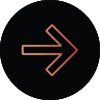
Design for Life : Create Lovable + Usable products for the near future!
What do customers want? It’s the golden question that boggles everyone, be a researcher, designer, developer or investor. This workshop is an intensive and interactive session aimed at beginners and design enthusiasts who are striving to define the future of mobile products and services. We would go through an exciting series of processes and tasks, to sensitize ourselves, to understand the user groups and need gaps, create wow moments, conceptualize what would make them happy and finally detail them out. In reality, customers expect nothing less than great products - regardless of technology, platform, or context. A good starting point would be to make your product or service as human as possible. Hence, we would be emphasizing a lot on the human aspect of design and innovation.
BRAINS ON
Sargheve Sukumaran
workshop leader
Sargheve has been creating New Products and Experiences for the European, American and Asian markets for over 8 years. He was the former Head of Mobile Product Design in Samsung Design Studio, South-west Asia.
He has worked together and led multidisciplinary teams across various domains like Mobile, Consumer Electronics, Healthcare and Packaging to deliver high impact Products and Experiences across the globe. Most of his work dwells at the confluence of Design, Technology and Business. He is currently the Design Director of Innovatika, experts in product/business/organizational innovation, responsible for their Design Interventions.
He is associated with various Institutions and D-schools formulating and shaping workshops, activities and events, focused on Innovation and Design.

App Clinic
How many times you wanted to have a UI/UX person in your team just to point out some potential problems? Now you have a opportunity to pitch your app to world best! It won't matter if it is a app with 1,000,000 downloads or just a free time project - show, and get a super useful feedback! What is needed to take part: working app, and a device with that app on it. App Clinic will be run twice so everybody will have a chance to show their app - first time between 14:30 and 15:30, and second 20:00 - 20:45.
BRAINS ON
Joe Cieplinski
Joe is Creative Director of Bombing Brain Interactive, makers of Teleprompt+ for iOS and OS X, as well as Setlists. He has two apps of his own, an aspect ratio calculator called x2y and a timer for live performers called Fin. Joe has been designing for the web, iPhone, iPad, and Mac applications for many years in collaboration with two of his best friends.
Scott Goodson
Scott Goodson is a senior member of the iOS community, having started as the tenth engineer building iPhone OS 1.0. In the last few years, he has managed the renowned Facebook Paper and Instagram iOS engineering teams to develop exceptionally polished apps. Scott graduated from UC Berkeley at 18 with a double major in Electrical Engineering and Computer Science. Since the launch of Paper in January 2014, Scott has championed the release of six major open source projects from its massive codebase — the first iOS projects open sourced by Facebook in 3 years.
Wiebe Elsinga
Co-Founder/Organizer Google Developer Group Dutch Android User Group and Mobile Technical Lead at ItudeMobile. Basically a EntrepreNerd.
Mainly focused on the design and development of mobile applications. Passionate about Android, UX and innovation. Also a public speaker at technical conferences worldwide and has been nominated to apply for the Google Developer Expert Program.
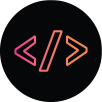
Learn more about your users!
See and experience new platform to establish a connection with your users. Thanks to this application you may easily communicate with users. Create messages, add photos or videos and send them to users. Create new events and grant awards to given activities to motivate users to act. Continuous improvement noways is a basic requirement to maintain the product in the market. Analyze statistics to develop the application according to clients' expectations.
HANDS ON
APPmobile24.com
WELCOME DAY 1
-
 A1
A110 AM  Mladen BarbaricPearl Studios, Montreal“Keynote: Designing Clarity”
Mladen BarbaricPearl Studios, Montreal“Keynote: Designing Clarity” -
 A4
A410 AM 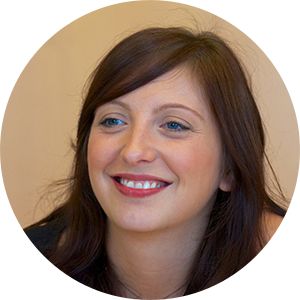
 Rachel LaycockCassie ShumThoughtWorks, NY“Keynote: Mobile development in a post Continuous Delivery world”
Rachel LaycockCassie ShumThoughtWorks, NY“Keynote: Mobile development in a post Continuous Delivery world”
-
 A1
A111 AM  Scott GoodsonFacebook, San Francisco“Effortless Responsiveness with AsyncDisplayKit”
Scott GoodsonFacebook, San Francisco“Effortless Responsiveness with AsyncDisplayKit” -
 A2
A211 AM 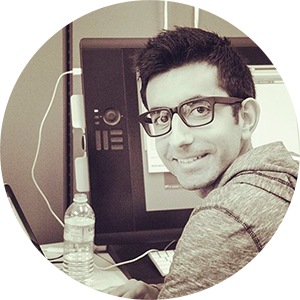 Alex ShiraziPhlint, Redwood City“Intuition Factors of the User Experience Design Process”
Alex ShiraziPhlint, Redwood City“Intuition Factors of the User Experience Design Process” -
 A3
A311 AM  QiThe Codeless Code, Washington“Hacking the Mind II”
QiThe Codeless Code, Washington“Hacking the Mind II” -
 A4
A411 AM  Cédric ChampeauPivotal, Nantes“Groovy & Android: a winning pair”
Cédric ChampeauPivotal, Nantes“Groovy & Android: a winning pair”
-
 A1
A112 PM 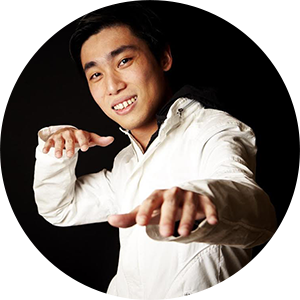 Min Ming LoPixelapse, San Francisco“Open Design Movement”
Min Ming LoPixelapse, San Francisco“Open Design Movement” -
 A2
A212 PM 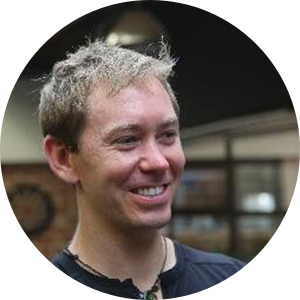 Kevin Rohlingship.io, San Francisco“Agile Practices for Mobile”
Kevin Rohlingship.io, San Francisco“Agile Practices for Mobile” -
 A3
A312 PM  Eric LafortuneSaikoa, Leuven“Fighting application size with ProGuard and beyond”
Eric LafortuneSaikoa, Leuven“Fighting application size with ProGuard and beyond” -
 A4
A412 PM  Chris Eidhofobjc.io, Berlin“Fun with Swift”
Chris Eidhofobjc.io, Berlin“Fun with Swift”
LUNCH
-
14:00 - 14:45: Quizzes
A1: Android, A2: iOS, A3: Design, A4: Hardware
-
 A1
A103 PM 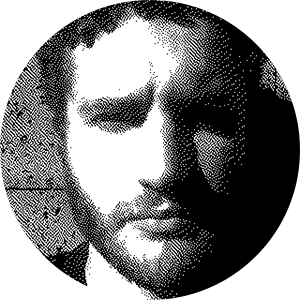 Jonathan BergerPivotal Labs, NY“Towards a Theory and Methodology of Test‑Driven Design”
Jonathan BergerPivotal Labs, NY“Towards a Theory and Methodology of Test‑Driven Design” -
 A2
A203 PM Inclusivity panelWomen in tech -
 A3
A303 PM  Krzysztof ZabłockiMashable, Warsaw“Stop recompiling”
Krzysztof ZabłockiMashable, Warsaw“Stop recompiling” -
 A4
A403 PM 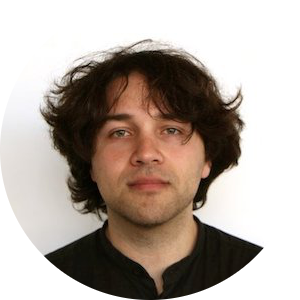 Victor Diazbq.com, Madrid“What if...? - An utopian vision to repurpose old phones.”
Victor Diazbq.com, Madrid“What if...? - An utopian vision to repurpose old phones.”
-
 A1
A104 PM 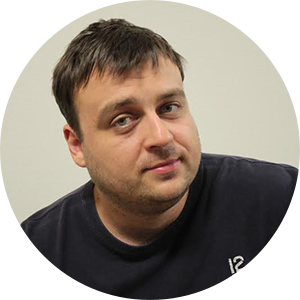 Nikolay ElenkovSarion Systems Research, Tokyo“Lollipop Security Enhancements”
Nikolay ElenkovSarion Systems Research, Tokyo“Lollipop Security Enhancements” -
 A2
A204 PM 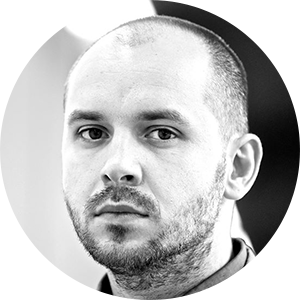 Patryk BukowieckiAllegro, Warsaw“Mobile trends for 2015”
Patryk BukowieckiAllegro, Warsaw“Mobile trends for 2015” -
 A3
A304 PM 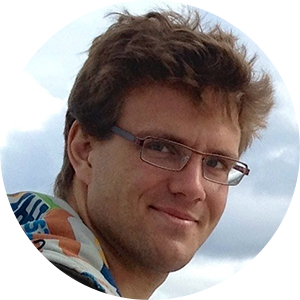 David RönnqvistSkype, Stockholm“Made for Everyone”
David RönnqvistSkype, Stockholm“Made for Everyone” -
 A4
A404 PM  Courtney HemphillCarbon Five, San Francisco“Mixing Lean UX and Agile Development”
Courtney HemphillCarbon Five, San Francisco“Mixing Lean UX and Agile Development”
-
 A1
A105 PM  Steve ArnoldEmberlight, San Francisco“Designing for a Connected Life”
Steve ArnoldEmberlight, San Francisco“Designing for a Connected Life” -
 A2
A205 PM  Karl-Henrik NilssonSogeti, Borlänge“Hacking your home”
Karl-Henrik NilssonSogeti, Borlänge“Hacking your home” -
 A3
A305 PM  Mike Lazer-WalkerFreelancer, NY“What does it mean for code to be maintainable?”
Mike Lazer-WalkerFreelancer, NY“What does it mean for code to be maintainable?” -
 A4
A405 PM  Daniel WeaverFacebook, Menlo Park“Scaling Android Apps for Emerging Markets”
Daniel WeaverFacebook, Menlo Park“Scaling Android Apps for Emerging Markets”
AFTER PARTY
WELCOME DAY 2
-
 A1
A110 AM 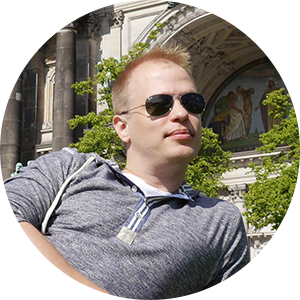 Juhani LehtimäkiFatrobot, Munich“Dear developers, design details matter”
Juhani LehtimäkiFatrobot, Munich“Dear developers, design details matter” -
 A2
A210 AM  Joe CieplinskiBombing Brain Interactive, NY“Design As if No One is Watching”
Joe CieplinskiBombing Brain Interactive, NY“Design As if No One is Watching” -
 A3
A310 AM 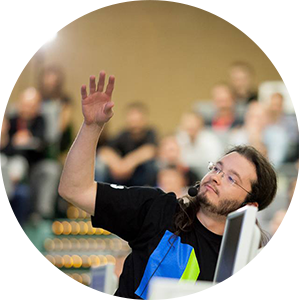 Rob AshtonFreelance, Glasgow“Games and Visualisers in Mobile JS”
Rob AshtonFreelance, Glasgow“Games and Visualisers in Mobile JS” -
 A4
A410 AM  Andy PiperTwitter, London“Weaving the Best Mobile Apps With Fabric”
Andy PiperTwitter, London“Weaving the Best Mobile Apps With Fabric”
-
 A1
A111 AM 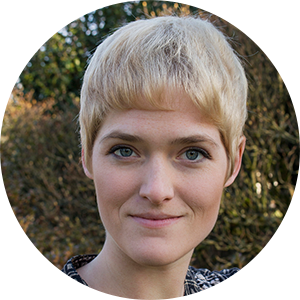 Amber CaseEsri, Portland“Designing Calm Technology”
Amber CaseEsri, Portland“Designing Calm Technology” -
 A2
A211 AM  Phil NashTwilio, London“WhatRTC?”
Phil NashTwilio, London“WhatRTC?” -
 A3
A311 AM 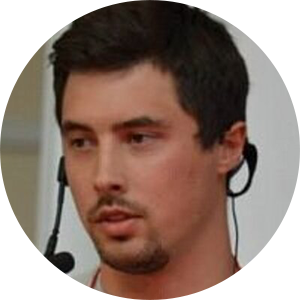 Max BazaliyBluebox Security, Kiev“Securing iOS applications”
Max BazaliyBluebox Security, Kiev“Securing iOS applications” -
 A4
A411 AM  Wiebe ElsingaFreelancer, Culemborg“Going from a good Android design to an awesome one”
Wiebe ElsingaFreelancer, Culemborg“Going from a good Android design to an awesome one”
-
 A1
A112 PM 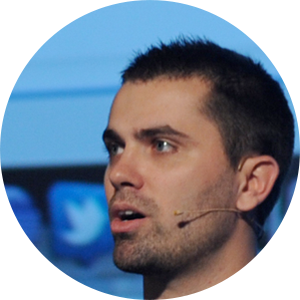 Pierre-Yves RicauSquare, San Francisco“Mortar & Flow”
Pierre-Yves RicauSquare, San Francisco“Mortar & Flow” -
 A2
A212 PM Security panelMobile Security Demystified -
 A3
A312 PM  Tom MaesManyGuide, Stockholm“Taming the jungle of glass rectangles”
Tom MaesManyGuide, Stockholm“Taming the jungle of glass rectangles” -
 A4
A412 PM 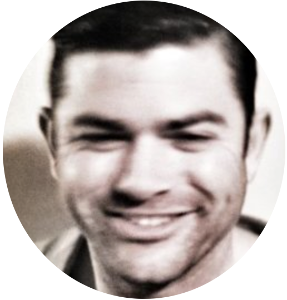 David FisherApplause, Boston“Designing Quality Products”
David FisherApplause, Boston“Designing Quality Products”
LUNCH
- 13:15 A1: Flash talks
-
 A1
A103 PM 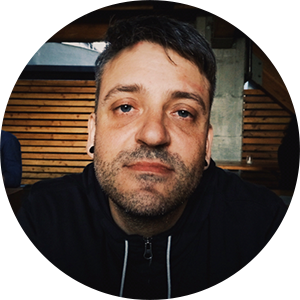
 Kito DietrichAmanda McGlothlinMutual Mobile, Los Angeles“The Power of Kickass Teams”
Kito DietrichAmanda McGlothlinMutual Mobile, Los Angeles“The Power of Kickass Teams” -
 A2
A203 PM 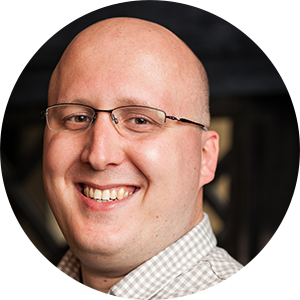 Cristiano BettaPayPal/BrainTree, London“A Credit Card Walks Into A Bar”
Cristiano BettaPayPal/BrainTree, London“A Credit Card Walks Into A Bar” -
 A3
A303 PM  Svetlana IsakovaJetBrains, Saint Petersburg“Kotlin, the Swift of Android”
Svetlana IsakovaJetBrains, Saint Petersburg“Kotlin, the Swift of Android” -
 A4
A403 PM 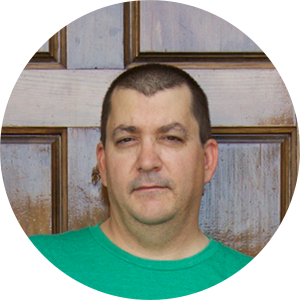 Marcus S. ZarraMartianCraft, LLC, San Francisco“Core Data: Multi-Threading Clarity”
Marcus S. ZarraMartianCraft, LLC, San Francisco“Core Data: Multi-Threading Clarity”
-
 A1
A104 PM 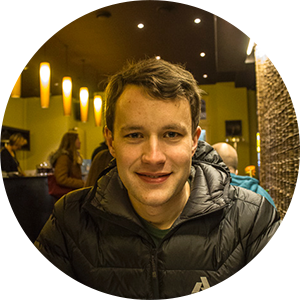 Adam ErnstFacebook, NY“Immutable Models on iOS”
Adam ErnstFacebook, NY“Immutable Models on iOS” -
 A2
A204 PM Cooperation panelCooperation between programmers and designers -
 A3
A304 PM 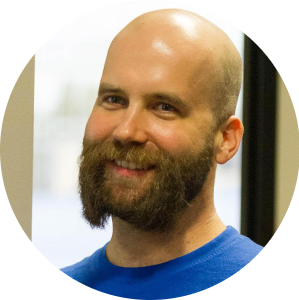 Andy DyerChaiOne, Houston“Automated Testing for Modern Android Applications”
Andy DyerChaiOne, Houston“Automated Testing for Modern Android Applications” -
 A4
A404 PM 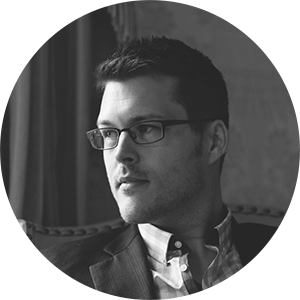 Dave WiskusBetter Elevation, NY“Designing for Humans”
Dave WiskusBetter Elevation, NY“Designing for Humans”
SURPRISE
CLOSING

The world of product development is growing in complexity, opportunity and the number of both people and projects. We’re entering a renaissance age of apps and devices, but are we considering our purpose? How do we evaluate if what we’re doing is merited? Will it be accepted, liked and paid for? Just because we can, should we? Over the years we have embraced simplicity and minimalism as traits that answer the above questions, but are they really the answer or just a tool in the product development box? Is clarity perhaps more important to success than simplicity?


The Continuous Delivery book was released in 2010. Described as the most impactful post-Agile practice, it has changed the way we think about developing software. It forced us to start thinking of software being “done” to mean released. With more features getting to done sooner CD practices have enabled us to get early feedback from users and taught us a lot about testing, monitoring and automating our delivery along the way. But mobile development has often been left behind. Or has it?
From the time of the first iPhone in 2008, mobile development has changed dramatically. Rapid improvements and added features in GPS, Touch ID and facial recognition have caused the quality of mobile applications to improve.
In this talk we will cover how, in a post Continuous Delivery world, we can continuously adapt and improve in many different aspects of mobile development.

AsyncDisplayKit is an iOS framework that keeps even the most complex user interfaces smooth and responsive. It was originally built to make Facebook’s Paper possible, and goes hand in hand with pop’s physics-based animations - but it’s just as powerful with UIKit Dynamics and conventional app designs. In this tutorial, you’ll learn how to use AsyncDisplayKit to make silky-smooth user interfaces - by one of the authors of the framework himself!

User Experience design is an important aspect in software development. There is often times a linear process designers follow to create an overall User Experience. What guides the designer’s decisions outside of user testing and software requirements is a set of intuition factors. This talk will cover Intuition Factors used when designing software with hardware components.

Designers want to make user interfaces beautiful and distinctive, developers must make them function, and end-users need them to accomplish tasks efficiently. Why are these three goals often at odds? How can we get designers and developers to understand and support each other’s missions, and still give the users what they really need?

For 10 years, Groovy has dramatically improved the productivity of Java developers on the desktop. With unique like closures, builders, AST transformations, traits, optional static compilation and many more, Groovy turned out to be a very competitive language on the JVM. Compared to other JVM languages, Groovy has the major advantage of being totally Java-friendly, both in terms of syntax and interpretability. But during those years, what happened on the mobile world? In particular, Android developers are used to develop applications in Java, so why Groovy, a JVM language, wouldn’t be usable for Android development too? Can we ease the pain of Android developers too?

Great design results from a process of constant iteration and relentless refinement. Design is fundamentally collaborative. We believe that the best ideas grow and expand with the input of others.
Open design is not about sharing a cropped final static image. It is about sharing your process; the hours of missteps and false starts you tore through, the frustration and anguish you pushed beyond, before you arrived at that final iteration. Each of those false starts is a learning experience, a teachable moment to invite others to understand not just what you designed; but how you did so.
Designing in the open can be frightening. But with the collective, collaborative genius, together we can push the boundaries and create better work.

Agile Mobile Development: Testing, Distribution, CI and More

Apps are getting larger, pushed by ever increasing user expectations. Social media, maps, advertisements,… As a developer, you may add a few libraries, and before you know it, your app is exceeding the constraints of the Android platform. In this presentation, I will discuss the main problems and some solutions. ProGuard, the bytecode optimizer and obfuscator in the Android SDK, is an obvious first step. I will show some optimized configurations that can help you to reduce the size of common libraries. If ProGuard isn’t sufficient, you may have to resort to more drastic techniques, such as dex splitting. I’ll discuss some techniques and their implications. I’ll also introduce the new dex splitting feature of our software DexGuard.

In this talk, we’ll have a look at the new things Swift brings to the table. Of course, we can use it as a different Objective-C, but with Swift many new things are possible.

Who’s had to refactor a mess of CSS? Who’s had unintended design changes (especially in responsive designs) lead to regressions? Developers had similar problems years ago, and developed automated testing techniques to protect their work. In this talk, we’ll explore what automated testing might look like for design. What would it look like to have a more defined definition of “done” for design? What if designers could refactor with impunity? We’ll explore testing possibilities for Visual design, User Experience design, and front-end engineering, and try to build a testing pyramid for design.
Women in tech
Women in tech has been a huge topic lately, yet still it seems vague. Is it only feminist mumbo-jumbo, or is it a real problem? What kind of behaviors can women expect when they enter area that used to be “for guys only”? We’ll try to answer that questions.


Women in tech
Women in tech has been a huge topic lately, yet still it seems vague. Is it only feminist mumbo-jumbo, or is it a real problem? What kind of behaviors can women expect when they enter area that used to be “for guys only”? We’ll try to answer that questions

Imagine you change your code and see the results immediately, no need to wait for your machine to recompile whole project and put in on device , instead of working 8h you’d work 4h and achieve same results, sounds good?
What could you achieve in those extra 4h you just got ? Either bring even more polish to your great apps, or have more time for your family and life.
Let’s talk about using advanced techniques to maximise your development speed, Playgrounds for Objective-C and how you can use runtime / code injection to get most out of your time.

For more than 5 years I’ve been experimenting creatively with mobile technologies. Because of this I developed Protocoder: a framework for creative exploration and prototyping for Android devices. Although Protocoder was created for a different purpose, I started to use it in a way that I could re-use my old phones in unexpected ways.
During the talk I will go through a story of trash, technology, planned obsolescence and utopian visions on how to repurpose the hundred millions devices we thrown away yearly.

This talk will introduce the new security features added in Android 5.0 and
will briefly describe their platform integration and internal implementation.
Features to be covered:
- Full disk encryption
- Verified boot and block-based OTAs
- SELinux policy changes
- Smart Lock (trust agents)
- Multi-user changes and managed profiles
- Device management API changes
- Cryptographic provider and SSL changes

I will try to figure out does it even make sense to try to predict trends on an annual basis in a landscape where there are so huge users shifts across various devices.

Since 2009, iOS has provided a great user experience, not only for people with perfect eyesight, hearing, and motor skills, but for everyone. There is usually very little coding involved in making sure that our own apps provide the same great experience.
Standard controls comes with a lot of behavior for free, and can be studied, customized, and used to tailor the experience for our apps and controls. Providing a good experience means thinking about the functionality of our apps and asking simple questions like: what does this button do?, what is the content on this screen?, etc.
Questions like these don’t relate to just making the app accessible. It’s relevant to all users of your app, equally, and should be asked both early and often in the development process.

Using two specific case studies, as well as learnings from additional projects, I walk attendees through the weekly cadence that we use at Carbon Five during product development. This methodology and its activities establish a sustainable culture of integrated and invested teams that are able to communicate across disciplines in a meaningful way.The result of creating this type of culture via cadence allows our teams to put new features in front of users each week for validation and hence move the product closer to its market fit faster.

Since our earliest beginnings, humans have been on a quest to master the environment. As the Internet of things becomes reality, the latest chapter of this very long journey unfolds before us. While amazing opportunity awaits, so does the potential for all of it to go terribly wrong.
In this talk I’ll explore the importance of aligning your designs for the Internet of things with human behavior in order to avoid failure. I’ll also talk about what we’ve learned at emberlight as we work to expand the user experience of lighting in the shadow of a design that has stood the test of time - the wall switch.

The internet of things is built around sensors, without sensors we don’t know what goes on and we can’t tell our software to make rational choices based on the analytics of this data but building our own sensors are not always practical or cost efficient when there are numerous of the shelf solution that could do the same thing if we could only access their data! This talk demonstrates how to reverse engineer standard sensor wireless protocols from weather stations, movement sensors and more to use for your own designs!

Minimizing the cost of change in your codebase is important, but what does that really mean? Quick prototypes are different from long-term infrastructure; small teams operate differently than large ones. Even worse, projects change over time, and today’s weekend hackathon often becomes tomorrow’s legacy code.
This talk will explore how we can manage our codebases and engineering processes so that our code remains maintainable, even as the definition of “maintainable” shifts.

Android’s staggering growth over the last few years has come both on flagship phones and budget devices. Those budget devices are now in direct price competition with feature phones and bringing hundreds of millions of people onto the platform each year. In order to develop great products for these people, getting smart about performance, connectivity, and device characteristics has become crucial for Facebook. I’ll discuss the qualitative and quantitative approaches we’ve taken to better understand the Android device market, and present the way we’ve scaled this in the organization. I’ll also cover the ways we’ve made the Facebook for Android application smarter about its device and network, and the optimizations we’re exploring for the future.

Android finally has established design guidelines and widely used UI design patterns. Android users understand functionality of components like the navigation drawer, action bar, sharing and many more. However, the guidelines are just that, guidelines, not rules.
All Android apps should not look alike but neither should they all reinvent all the controls. In this presentation I will take a deep dive into details of the common design patterns and how they can be customised without compromising usability.
I want to help developers and designers alike to understand how to correctly use Android UI design patterns.

The world is full of pretty products that aren’t very functional. While customers may be initially attracted to those shiny objects, in the long run, if a product is an empty shell, it will not last. An useless product that looks great is a failure. And the failure belongs as much to the designer as anyone else.
If you design hoping people will notice how awesome your design is, you will be disappointed. Or you will build something that isn’t useful. The best design decisions are the ones people don’t notice. The subtle choices that contribute to making the product easier to use, better at it’s purpose. If you do your job well, all but the most discerning customers won’t be able to articulate why they like your product more. They just will.
In this talk, we’ll take a look at examples of products that are designed well, not because of how they look, but how they work. The small decisions made along the way that contribute to success. We’ll also talk about avoiding the common pitfalls of design for design’s sake. Over-abundant animations, the obsession with “clean” interfaces that lack function, making our products so opinionated that only we like them—all the things we designers tend to fawn over that don’t matter much to most people. Finally, we’ll talk about balancing the need to serve our customers’ best interests, vs. our own needs to survive as a company. You can’t build products for people, after all, if you go out of business.
Successful design solves problems. Well designed products meet needs. Focus your energy there, and you will build something truly great.

I’ve written a few games for mobile devices in JS and I’ve done my time in the enterprise visualizing tools space too.
Let’s talk about practical things like performance, frameworks and team building with these concepts with a real focus on the lessons learned doing this the hard way when the only tools at your disposal are a text editor and a team of silverlight developers.

Twitter was born on mobile, and we know what it takes to design, release, and grow a great mobile app. In this talk, we will share some of the lessons we have learned and highlight how Fabric, Twitter’s recently announced modular mobile platform, makes it easy for developers to build great apps. Fabric combines the services of Crashlytics, MoPub, Twitter and others to address some of the most common and pervasive challenges that all app developers face: stability, distribution, revenue and identity.

We cannot interact with our everyday life in the same way we interact with a desktop computer. Technology shouldn’t require all of our attention, just some of it, and only when necessary. How can our devices take advantage of location, proximity and haptics to help improve our lives instead of get in the way? This presentation covers the history of calm technology, wearable computing, and how designers can make apps “ambient” while respecting privacy and security. We’ll look at ambient notifications, compressing information into other senses, and designing for the least amount of cognitive overhead.

Traditionally browsers and mobile applications communicate via servers, but what if they could speak to each other? WebRTC is a small set of APIs that make peer to peer communication possible between browsers and mobile applications. Video, audio and data can flow from browser to browser, from app to app, opening up a new set of possibilities for modern communications.
We’ll take a look at what WebRTC gives you and, importantly, what it leaves out. We’ll take a look at implementing a simple chat application and speculate over more complicated use cases and examples.

Topics covered:
- iOS security mechanisms
- Understanding security from attacker perspective
- One more time about jailbreak and reverse engineering (tools detection and anti-detection)
- Best practices with real code examples
- Advanced security (iOS kernel, syscalls)

Making a well designed Android application is not enough anymore, it has to be awesome. This talk will show you how to change a good design to a awesome design to it will benefit your app.

Dagger, Flow and Mortar are open source libraries that form the backbone of Square’s flagship Register app. Use them to spend less time fighting the life cycle and more time coding (and unit testing).
Mobile Security Demystified
Security experts discuss common pitfalls, lessons learned, and tricks & tips for improving the security of your apps.
 Bookmarked
Bookmarked

